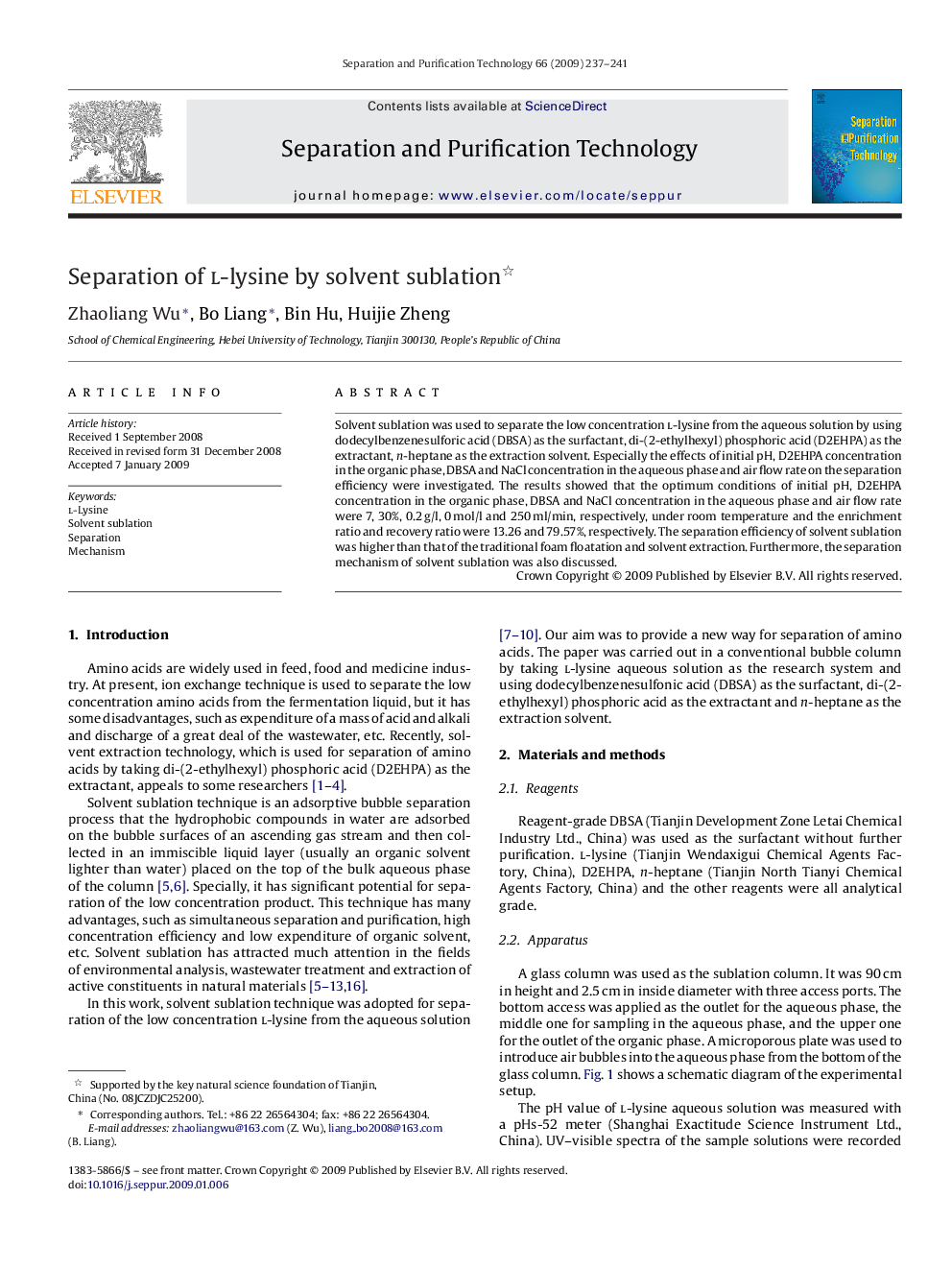| Article ID | Journal | Published Year | Pages | File Type |
|---|---|---|---|---|
| 643319 | Separation and Purification Technology | 2009 | 5 Pages |
Solvent sublation was used to separate the low concentration l-lysine from the aqueous solution by using dodecylbenzenesulforic acid (DBSA) as the surfactant, di-(2-ethylhexyl) phosphoric acid (D2EHPA) as the extractant, n-heptane as the extraction solvent. Especially the effects of initial pH, D2EHPA concentration in the organic phase, DBSA and NaCl concentration in the aqueous phase and air flow rate on the separation efficiency were investigated. The results showed that the optimum conditions of initial pH, D2EHPA concentration in the organic phase, DBSA and NaCl concentration in the aqueous phase and air flow rate were 7, 30%, 0.2 g/l, 0 mol/l and 250 ml/min, respectively, under room temperature and the enrichment ratio and recovery ratio were 13.26 and 79.57%, respectively. The separation efficiency of solvent sublation was higher than that of the traditional foam floatation and solvent extraction. Furthermore, the separation mechanism of solvent sublation was also discussed.
